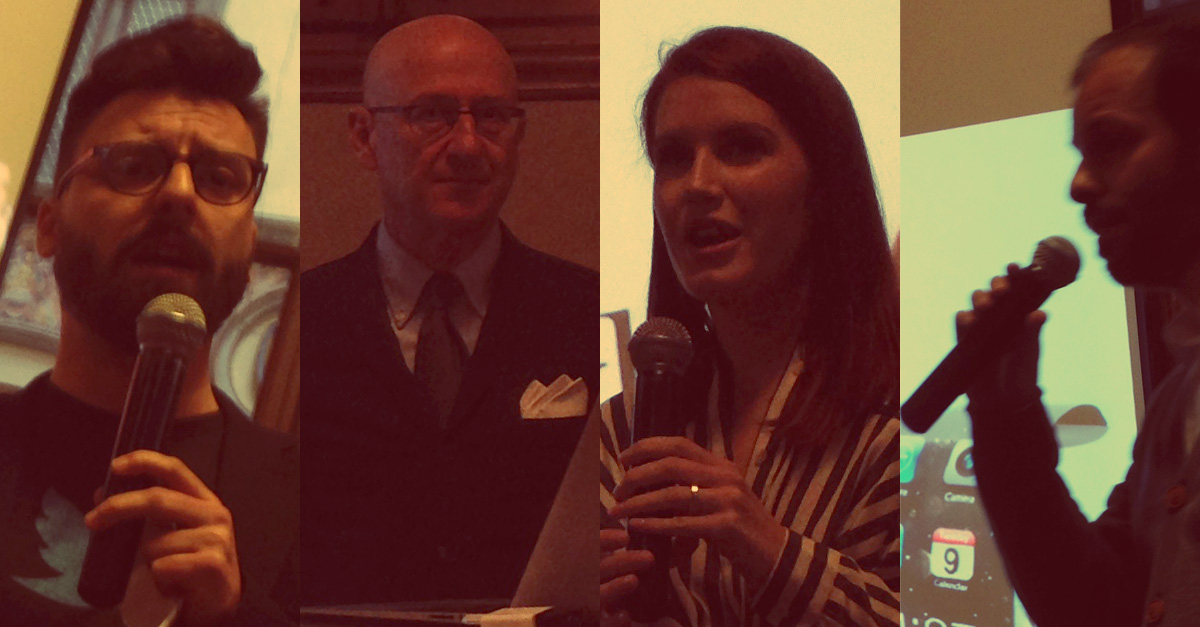Fashion is a beautiful creature living a bad relationship with technology. Often reluctant to embrace the latest IT innovations, first off social media madness, the apparel industry is trying hardly to make up for lost time, starting from events where diverse professionals share their experiences together.
Among the most relevant meet-ups of Beauty and the Digital worldwide I can surely recommend Decoded Fashion, Fashion Digital Los Angeles, The Fashion & Clothing Marketing Innovations Conference and, obviously, all the WWD summits.
On 11th and 12nd of January Luisa Via Roma in partnership with the Municipality of Florence organized the first edition of the Fashion Technology Summit, a symposium dedicated to the topics of technology within the fashion industry. A starting point, a number zero issue where all the professionals invited to Firenze 4ever 10th edition had the chance to connect each other and share their experiences together, as aimed by Luisa Via Roma’s founder Andrea Panconesi during his welcome speech.
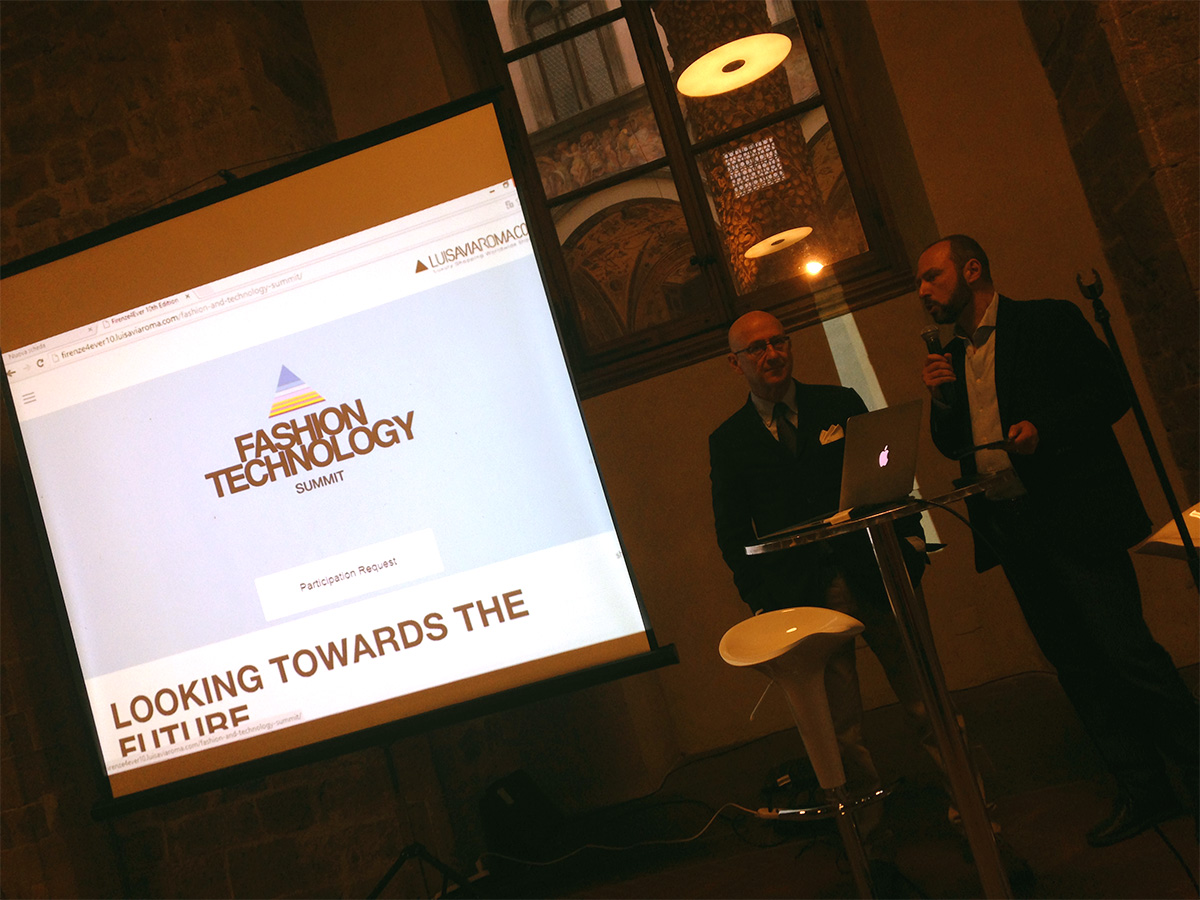
Among the most interesting talks I would like to mention #Twitter4Fashion: Plan for the Moment by Twitter Italia’s Sales Manager Federico Paderni. Starting from the early days of fashion weeks and remembering some iconic moments of fashion, as Anna Wintour checking continuously social media data with her mobile device during a catwalk, Federico reported some of the most relevant case studies in fashion where the 140-monster-tweet was the real message to send to the world, such as: Tommy Hilfiger showing anticipation of clothes before the official fashion show, UK-based hairdressing company Toni & Guy and the designer fashion brand Matthew Williamson.
Twitter is a place when people can be very close to the fashion industry, creating personal conversations directly with models, designers and bloggers, more than brands and companies.
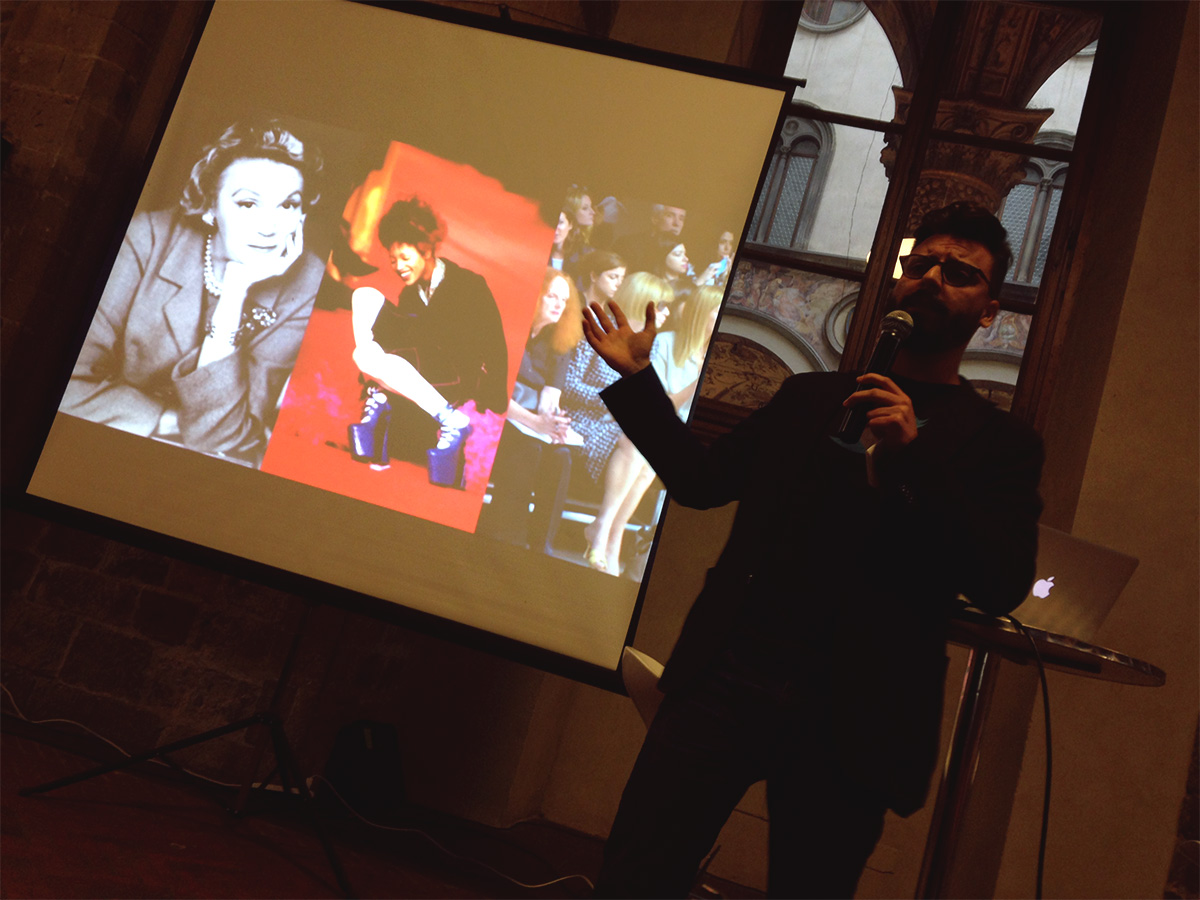
Twitter is live: if something is happening in the world, it is happening on Twitter.
After this sentence (we know very well what it means…), Federico reports a not so interesting list of Twitter functions, except for the last one: a BUY button natively integrated in the platform. Tested with Taylor Swift profile, this is the function which can make social media e-commerce finally going mainstream. Keep eyes on it.
My favorite talk of the first day of summit was Innovation in Social Networks Monetization by Amber Venz, co-founder of rewardStyle, a platform offering premium services for style publishers and brands.
Amber told the story of her first digital life, when she was a blogger trying to figure out how to make money publishing articles of products linked to the online shopping platforms where people had the chance to buy, but without receiving any kind of fee after sales transactions.
Then she focused herself on the issue of trackable links from blogs to e-commerce websites and found rewardStyle, a company focused on offering a service where bloggers/publishers can create customised links to the products which can be purchased on the websites of the brands. It’s a win-win-win situation: rewardStyle, the blogger and the brand monetize only when a customer really accomplishes an online transaction.
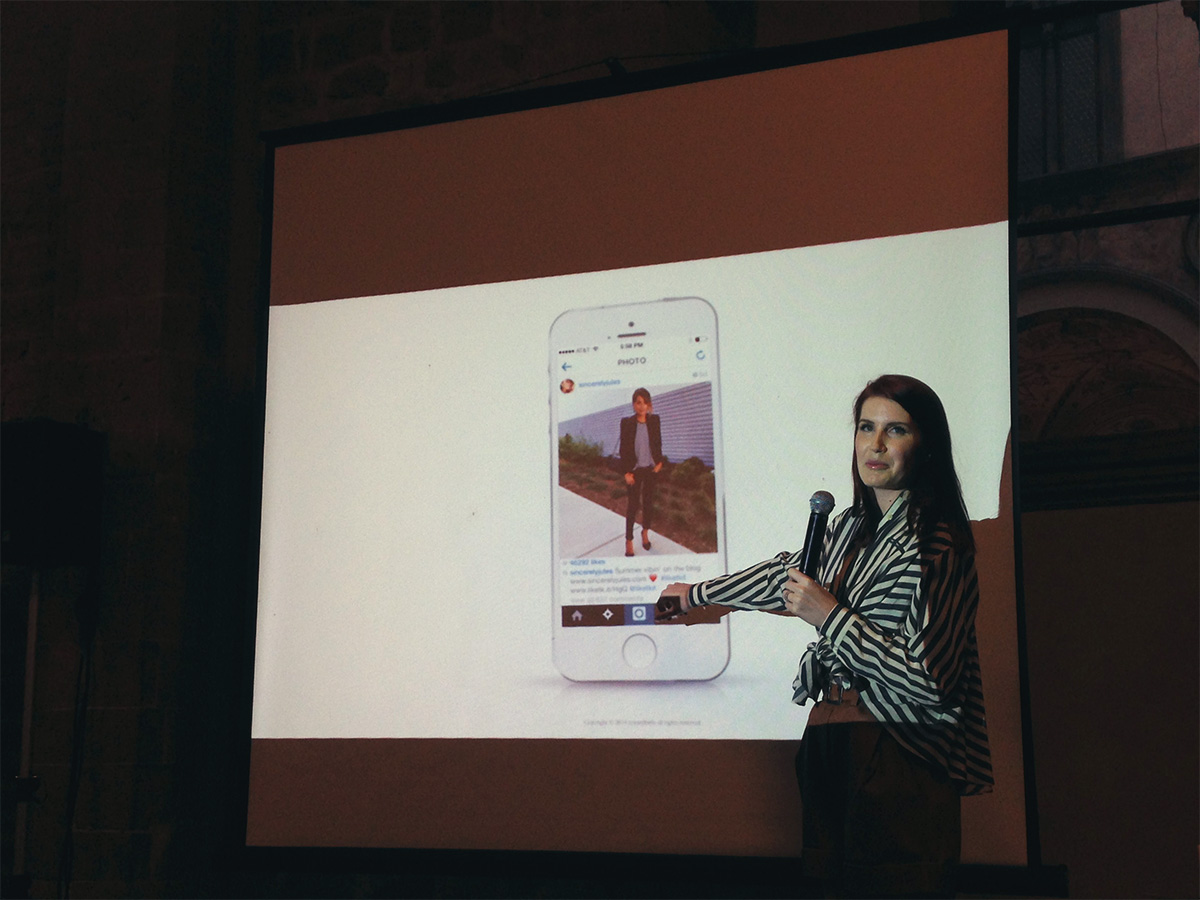
Obviously the next step of Amber & co. was to extend their tools to social media channels and then the big idea came up from the big thing in fashion now: mr. Instagram. They launched LIKEtoKNOW.it, a new web platform to connect customers and brands using a combination of hashtags and customised shortened links inserted in the comments of pictures visualizing products on Instagram, in order to receive all the details about the clothes via email. As Amber explained:
People prefer to have information about all the products to buy in one place, more than searching one by one in Google.
In addition LIKEtoKNOW.it also provides detailed analytics to publishers and retailers, so they can implement the next actions to do to improve their sales. Some weeks ago a client of mine asked me for an Instagram tool in the fashion market and I have to say that currently this is the most impressive solution to use.
From online to offline retail spaces: Smart Selling consisted of a different vision unveiled by Antonio Bosio, Head of Product & Solution Department at Samsung Italy. Starting from a video showing the latest technologies built exclusively for the physical shopping experience, Antonio described the concept of the customer journey in a retail space, which is composed of diverse moments, when a customer could interact with several devices with different goals.
Indeed before, during and after buying a product a client can play contents in videowalls or smart Tvs synced to a mobile device, select products with interactive kiosks/totems connected to the store database or the internet, pay on an interactive table cash desk, consume stories related to the history of products on large format displays exploiting augmented reality and real time facial expression recognition applications.
In a few words Samsung built the perfect hi-tech store for the modern customer (not only in fashion) with extra goals in mind, that’s to say: reducing costs and increase revenues. I hope not to wait so much to see a store like this in the streets of Florence.
Wearable, wearable, wearable: can you ask for more now? Everybody wants to wear a pair of Google Glass (but maybe we have to wait more and turn our head to the newest Microsoft Hololens), then the talk Wear@ble ideas by IED Florence’s Director Alessandro Colombo catched the eye of the most of the audience.
What are we going to wear in the next future?
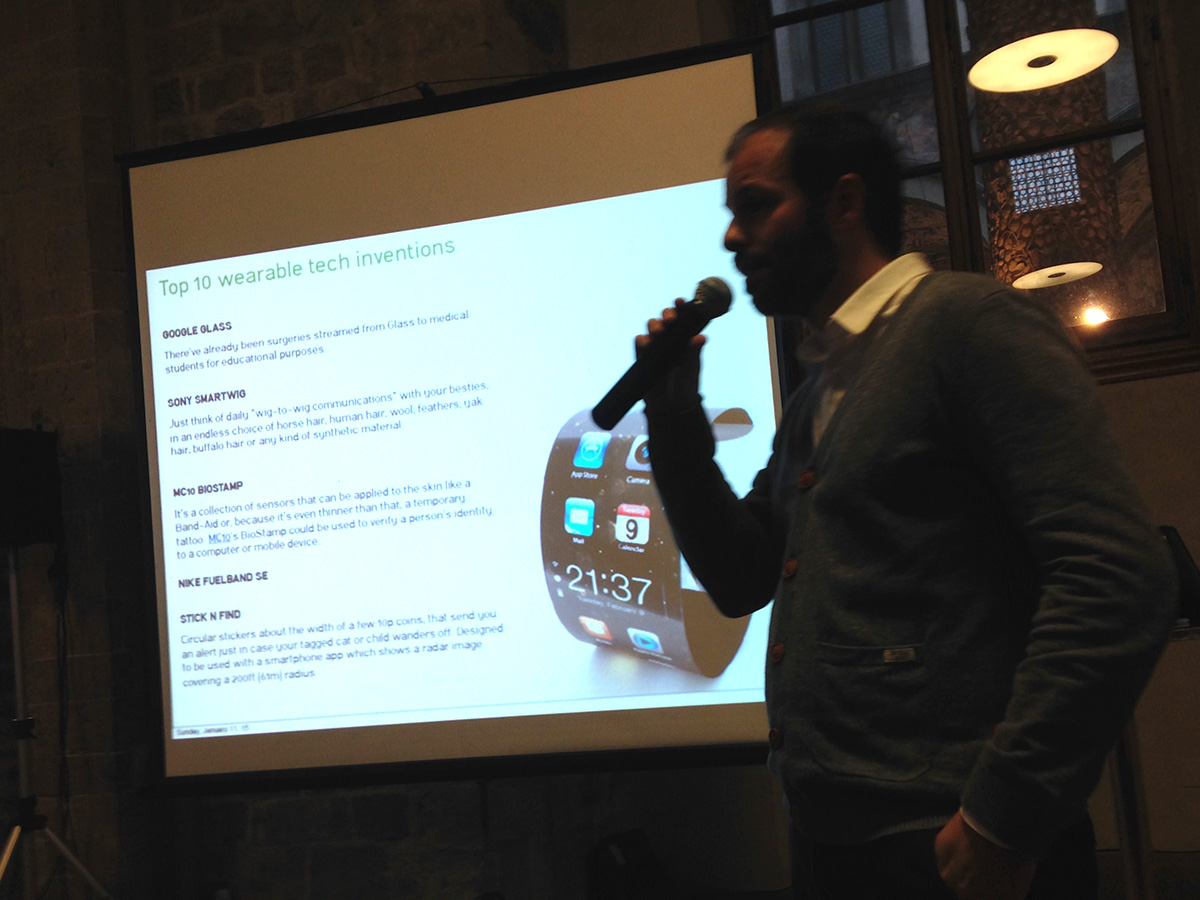
From a study conducted by Forbes we derive that people want wearable tech now more than ever. Thus Alessandro showed an infographics reporting the types of wearable products a person can wear, the history of wearables and top tech products (Google Glass, Sony SmartWig, MC10, Nike FuelBand SE, Skully helmet, Jawbone UP, ReconJet sports glasses, Plug & Wear, O-Synce screeneye x and so on).
The creepiest moment of these two days of summit? When Alessandro showed the next frontier of fashion and technology: implantable wearables. Yes, special devices you will insert under your skin or in other areas of your body. Are you ready to buy an implantable smartphone? By the way this is not a new topic, because some bio hackers have been experimenting in this area since some years. I still remember the biochip implants used by Tim Cannon, who built Circadia, the first-ever under the skin computer chip implant capable to record and transmit biometrical data. If you want to know more (and you have courage enough) watch the video below.
A couple of years ago the municipalities of Florence and Shanghai partnered together to build the Sino-Italian Design Exchange Center, an UNESCO exchange platform dedicated to promote design in the market of China and Italy. As the Deputy Representative of Florence Base, Ren Cui presented China: from traditional retail to shopping experience reported, an interesting report on the current state of the east asian market.
China is expected to become one of the most important countries for luxury investments. Indeed there is a big growth of upper middle class which is strongly interested in products of fashion in this sector. Some other data reported how lower-tier cities such as Beijing, Shangai are living the rise of ecommerce, together with the opening of some relevant flagship stores (LVMH, Hermès which uses music as soundtrack of the shopping experience).
At the end Cui pointed out some relevalent conclusions to his speech: chinese companies are required to create a balance between online shopping and physical stores and there is no way out: retailers should also embrace in-store technology (see Samsung solutions?). Lastly I heard a very good sentence, which probably summarized the main concept behind this summit:
The new concept of retail center has to be experiental, promotional and technological.
Conclusions
We need more. Really. Kudos to Andrea Panconesi and all the staff of Luisa Via Roma for organizing a summit blending fashion and some of the several faces of technology. But we really need more events like these.
No hackathons only for programmers who don’t know what fashion really wants, no conferences where speakers promote their works and nothing more, no informal meetings which are really (and only) parties for bloggers. We need moments like this, where the speaker is in front of you and you can have a coffe with him/her, you can talk with people working in foreign startups as well as big companies, schools and public institutions. Because the point here is not only about fashion companies. It is about connecting different points.
Some negative elements for this summit were: not so sharp scheduling (we did not have the time to make a proper Q&A session), not a great participation in the audience (I did not see so many professionals of the field), not proper social media coverage ( tweets and pictures about parties to happen in the same night with fashion bloggers more than related topics). But some good points were surely: the location (in the centre of Florence and with the proper size), days (sunday and monday) and then invited speakers (from diverse markets and contexts), which really makes the difference.
Because Content Is King. Ever.

